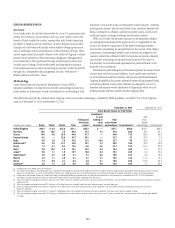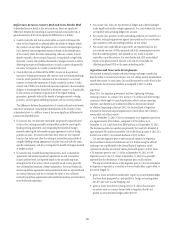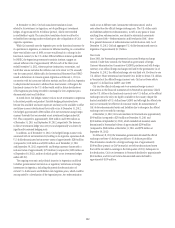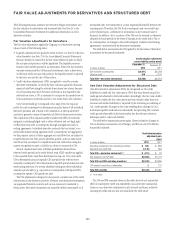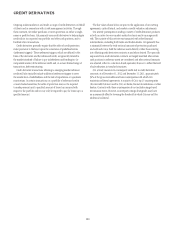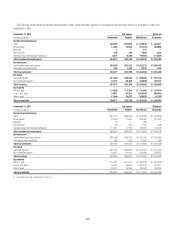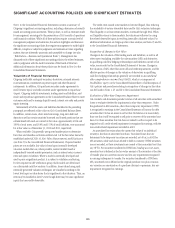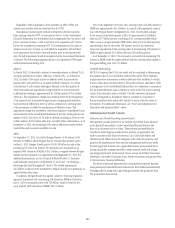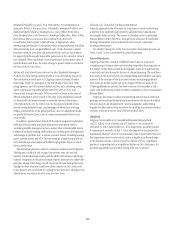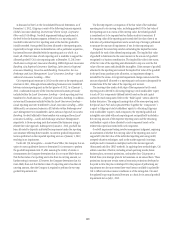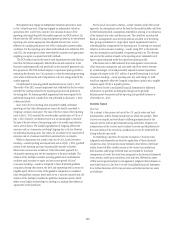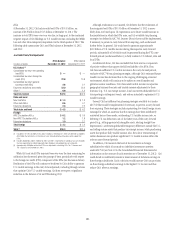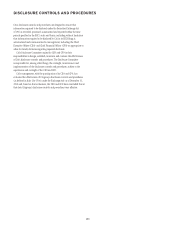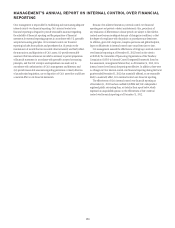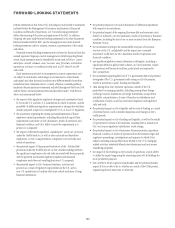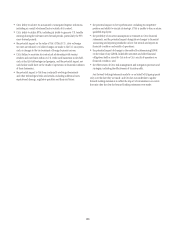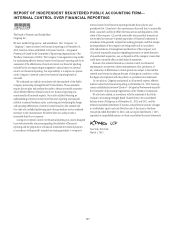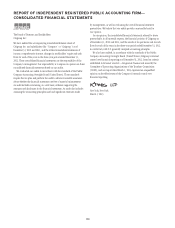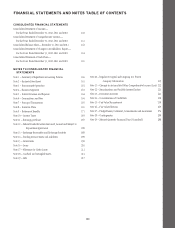Citibank 2012 Annual Report Download - page 151
Download and view the complete annual report
Please find page 151 of the 2012 Citibank annual report below. You can navigate through the pages in the report by either clicking on the pages listed below, or by using the keyword search tool below to find specific information within the annual report.129
As discussed in Note 4 to the Consolidated Financial Statements, as of
December 31, 2012, Citigroup consists of the following business segments:
Global Consumer Banking, Institutional Clients Group, Corporate/
Other and Citi Holdings. Goodwill impairment testing is performed at
the level below the business segment (referred to as a reporting unit).
Goodwill is allocated to Citi’s reporting units at the date the goodwill is
initially recorded. Once goodwill has been allocated to the reporting units,
it generally no longer retains its identification with a particular acquisition,
but instead becomes identified with the reporting unit as a whole. As a
result, all of the fair value of each reporting unit is available to support the
allocated goodwill. Citi’s nine reporting units at December 31, 2012 were
North America Regional Consumer Banking, EMEA Regional Consumer
Banking, Asia Regional Consumer Banking, Latin America Regional
Consumer Banking, Securities and Banking, Transaction Services,
Brokerage and Asset Management, Local Consumer Lending—Cards
and Local Consumer Lending—Other.
Citi’s reporting unit structure in 2012 was the same as the reporting unit
structure in 2011, although certain underlying businesses were transferred
between certain reporting units in the first quarter of 2012. As of January 1,
2012, a substantial majority of the Citi retail services business previously
included within the Local Consumer Lending—Cards reporting unit was
transferred to North America—Regional Consumer Banking. In addition,
certain small businesses included within the Local Consumer Lending—
Cards reporting unit were transferred to Local Consumer Lending—Other.
Additionally, an insurance business in El Salvador within Brokerage and
Asset Management was transferred to Latin America Regional Consumer
Banking. Goodwill affected by these transfers was reassigned from Local
Consumer Lending—Cards and Brokerage and Asset Management,
respectively, to those reporting units that received the businesses using a
relative fair value approach. Subsequent to January 1, 2012, goodwill has
been allocated to disposals and tested for impairment under the reporting
unit structure reflecting these transfers. An interim goodwill impairment
test was performed on the impacted reporting units as of January 1, 2012,
resulting in no impairment.
Under ASC 350, Intangibles—Goodwill and Other, the Company has an
option to assess qualitative factors to determine if it is necessary to perform
the goodwill impairment test. If, after assessing the totality of events or
circumstances, the Company determines that it is not more-likely-than-not
that the fair value of a reporting unit is less than its carrying amount, no
further testing is necessary. If, however, the Company determines that it is
more-likely-than-not that the fair value of a reporting unit is less than its
carrying amount, then the Company is required to perform the two-step
goodwill impairment test.
The first step requires a comparison of the fair value of the individual
reporting unit to its carrying value, including goodwill. If the fair value of
the reporting unit is in excess of the carrying value, the related goodwill
is considered not to be impaired and no further analysis is necessary. If
the carrying value of the reporting unit exceeds the fair value, there is an
indication of potential impairment and a second step of testing is performed
to measure the amount of impairment, if any, for that reporting unit.
If required, the second step involves calculating the implied fair value
of goodwill for each of the affected reporting units. The implied fair value
of goodwill is determined in the same manner as the amount of goodwill
recognized in a business combination. The implied fair value is the excess
of the fair value of the reporting unit determined in step one over the fair
value of the net assets and identifiable intangibles. If the amount of goodwill
allocated to the reporting unit exceeds the implied fair value of the goodwill
in the pro forma purchase price allocation, an impairment charge is
recorded for the excess. A recognized impairment charge cannot exceed the
amount of goodwill allocated to a reporting unit and cannot subsequently be
reversed even if the fair value of the reporting unit recovers.
The carrying value used in both steps of the impairment test for each
reporting unit is derived by allocating Citigroup’s total stockholders’ equity
to each of Citi’s components (defined below) based on the risk capital
assessed for each component. Refer to the “Risk Capital” section above for
further discussion. The assigned carrying value of the nine reporting units,
the Special Asset Pool and Corporate/Other (together the “components”)
is equal to Citigroup’s total stockholders’ equity. In allocating Citigroup’s
total stockholders’ equity to each component, the reported goodwill and
intangibles associated with each reporting unit are specifically included in
the carrying amount of the respective reporting units and the remaining
stockholders’ equity is then allocated to each component based on the
relative risk capital associated with each component.
Goodwill impairment testing involves management judgment, requiring
an assessment of whether the carrying value of the reporting unit can be
supported by the fair value of the individual reporting unit using widely
accepted valuation techniques, such as the market approach (earnings
multiples and/or transaction multiples) and/or the income approach
(discounted cash flow (DCF) method). In applying these methodologies, Citi
utilizes a number of factors, including actual operating results, future
business plans, economic projections, and market data. Citi prepares a
formal three-year strategic plan for its businesses on an annual basis. These
projections incorporate certain external economic projections developed at
the point in time the plan is developed. For the purpose of performing any
impairment test, the most recent three-year forecast available is updated by
Citi to reflect current economic conditions as of the testing date. Citi used
the updated long-range financial forecasts as a basis for its annual goodwill
impairment test on July 1, 2012.



